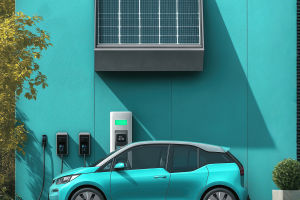The automotive industry stands at a pivotal junction. Electric vehicle dominance surges and global economic uncertainties squeeze traditional markets.
Legacy giants face immense pressure to innovate or risk fading into the rearview mirror. This volatile landscape demands radical solutions beyond mere horsepower or sleek designs.
AI: The New Engine
Enter Artificial Intelligence - the powerful new engine driving transformation. Far beyond factory robots, AI promises to overhaul everything from how cars are conceived and built to how they navigate the world and protect occupants. For OEMs, it's the key to slashing costs, boosting efficiency, and unlocking entirely new revenue streams in an unforgiving market. Ignoring its potential is no longer an option.
Predicting Peril
Safety leaps forward thanks to AI's predictive prowess. Complex neural networks process real-time sensor data, constantly evaluating potential hazards. The system doesn't just see the car beside you; it can analyze its speed, trajectory, and even subtle cues suggesting an imminent lane change. This allows for proactive warnings or automatic interventions – braking, steering adjustments – milliseconds before a human driver might react, potentially preventing collisions.
Traffic Symphony
This constant data exchange creates a kind of urban choreography. AI optimizes routes dynamically, suggesting detours around sudden jams or accidents. It enables smoother merging on highways and can even coordinate groups of vehicles for efficient platooning, reducing fuel consumption and emissions. The frustrating stop-start commute could become a relic of the past.
AI's Design Lab
Beyond the road, AI accelerates innovation in the lab. Generative AI is rapidly transforming Research & Development. Instead of years of trial-and-error, engineers input design goals and constraints. The AI then generates thousands of potential component shapes, structures, or even entire vehicle layouts – exploring possibilities no human might conceive. This drastically slashes development time and costs.
Virtual Testing
Testing evolves dramatically. Generative AI creates highly realistic simulations for crash tests, aerodynamics, and durability. Engineers can virtually crash a car a thousand times with slight variations, identifying weaknesses and optimizing safety structures faster and cheaper than physical prototypes allow. It also streamlines ensuring compliance with complex global regulations.
Material Magic
AI delves deep into materials science. It analyzes vast databases of material properties, predicting how novel combinations might behave. Need a lighter, stronger alloy for an EV chassis? Or a more efficient, longer-lasting battery component? AI can suggest promising new formulations and simulate their performance, accelerating breakthroughs that make vehicles safer, more efficient, and sustainable.
Balancing Act
This AI integration isn't without challenges. Concerns about data privacy, cybersecurity for connected vehicles, and the ethical decisions in autonomous driving scenarios require careful navigation. The cost of developing and implementing cutting-edge AI systems is substantial. Manufacturers must balance relentless innovation with reliability, safety, and maintaining the core joy of driving.
Road Ahead
The automotive industry is irrevocably changed. AI is not a passing trend; it's the bedrock of its future. From creating smarter, safer vehicles on the road to revolutionizing how they are designed and built, AI's impact is profound and pervasive. Embracing this technology intelligently and responsibly is the only route forward for manufacturers aiming to lead in this exhilarating new era of mobility.
Destination Innovation
The journey powered by Artificial Intelligence has just begun. It promises smoother commutes, safer streets, groundbreaking vehicle designs, and sustainable manufacturing. While challenges remain, the potential to redefine transportation for the better is immense. The cars of tomorrow, infused with intelligent technology, are poised to transform not just how we drive, but how we experience the world on the move. The road ahead is intelligent, connected, and brimming with possibility.


